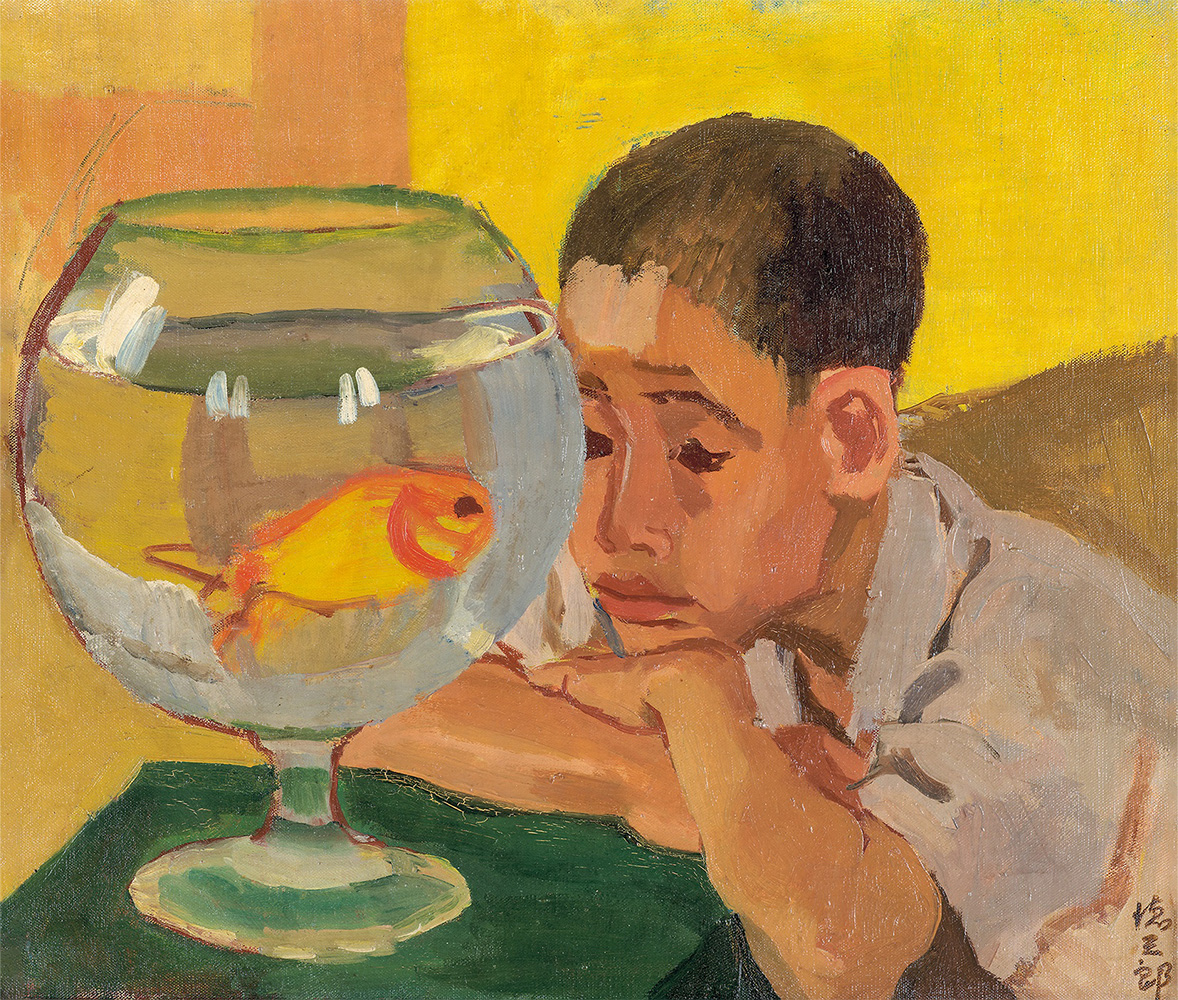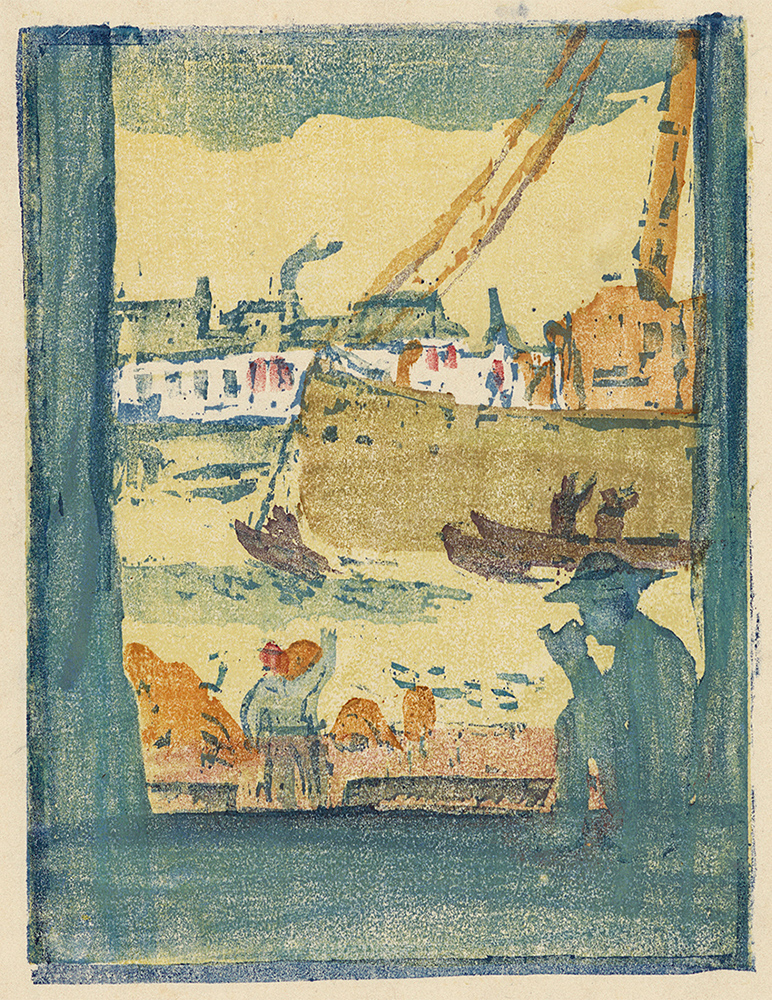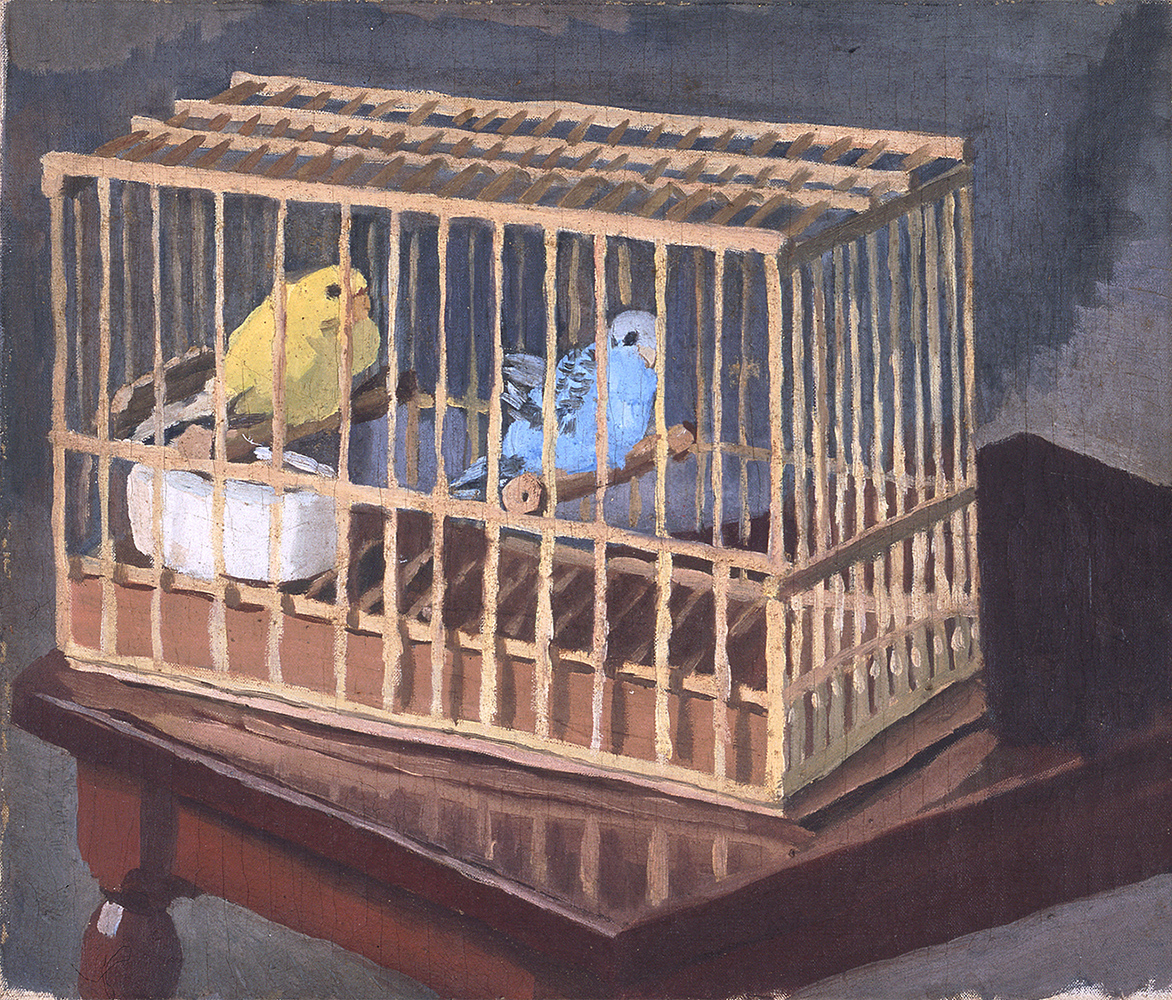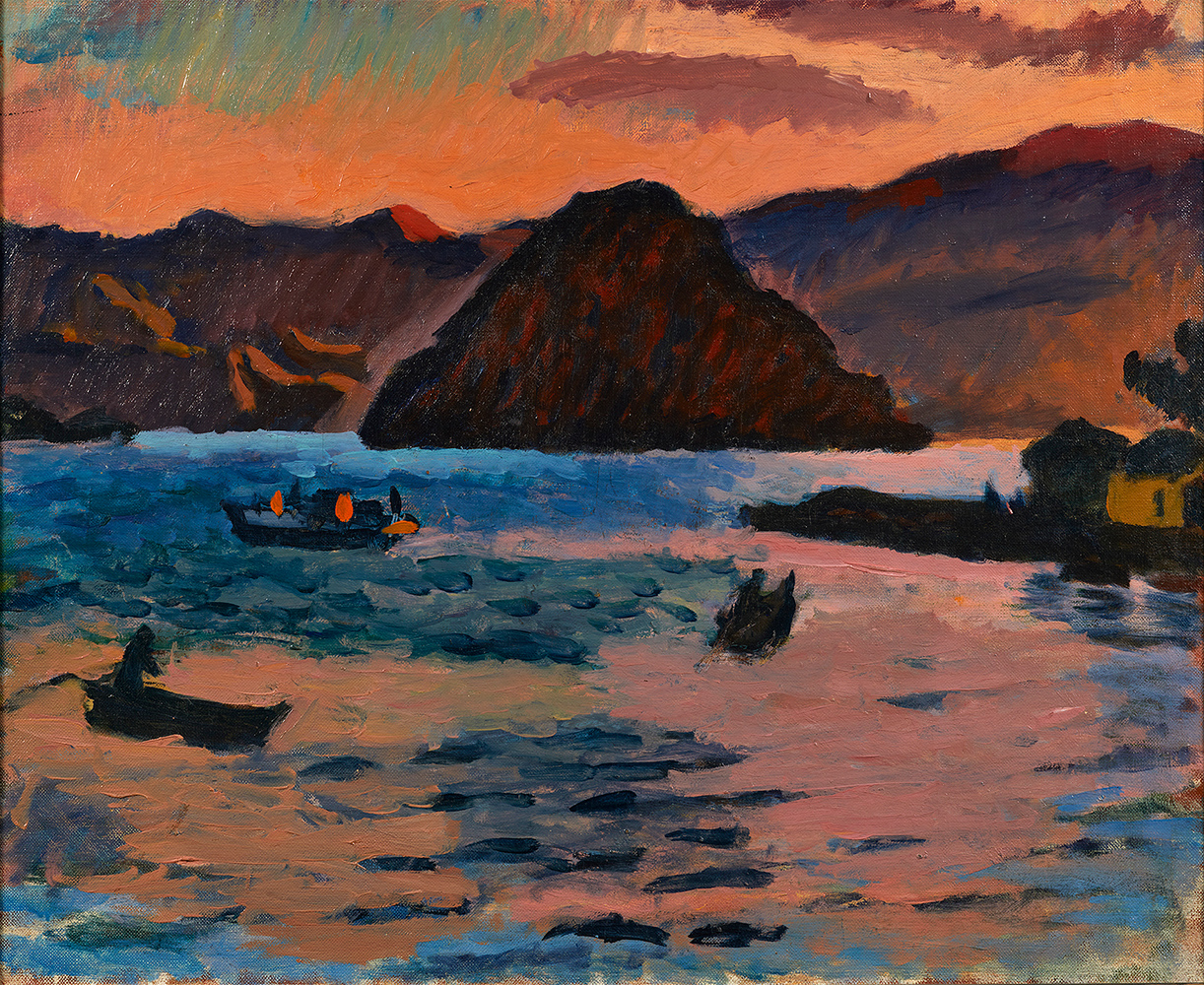
Kobayashi Tokusaburo: A Retrospective
Saturday, November 22, 2025 - Sunday, January 18, 2026
- Closed
- Mondays (except November 24, January 12), November 25, December 29 – January 2
- Hours
- 10:00 am to 6:00 pm (8:00 pm on Fridays)
Last admission is 30 minutes before closing time.
Exhibition Overview
Kobayashi Tokusaburo (1884–1949) is a painter who was active from the Taisho era to the 1940s. After graduating from Tokyo Bijutsu Gakko (Tokyo Fine Arts School), he played an active role at Fyuzan-kai (Fusain Society), which attracted attention for the pioneering pictorial expressions demonstrated by its young members. From 1923, Tokusaburo continued presenting his works mainly at Shunyo-kai. He painted numerous pictures of fish such as sardines and horse mackerels, which left a striking impression on the people around him. Once he had reached his mid-forties, he began producing more works depicting ordinary daily life with his own children as the models and demonstrated his individuality as an artist. In his later years, intrigued by Enoura (Numazu-shi) and other natural landscapes, he did landscape paintings of inlets and mountain streams. He worked energetically with a paintbrush in hand until immediately before his death.
As an associate member of the literary magazine Kiseki, Tokusaburo designed the covers and frontispieces. He is also known to have played an active role as stage art manager at “Geijutsuza,” a theatrical company led by Shimamura Hogetsu. In this exhibition, we shall also uncover Tokusaburo’s contribution to stage art and publications.
This is the first major retrospective of Kobayashi Tokusaburo, and his artistic achievements will be traced through approximately three hundred works and archive materials. We hope this will lead to reappreciation of Kobayashi Tokusaburo, who was acknowledged by photographers, yōga (Western-style painting) artists, scholars of literature, theater professionals, art critics, and others in those days.

Child looking at a Goldfish, 1929, Hiroshima Prefectural Art Museum
Child looking at a Goldfish

1929, Hiroshima Prefectural Art Museum

Child looking at a Goldfish, 1928, The National Museum of Modern Art, Tokyo
Child looking at a Goldfish

1928, The National Museum of Modern Art, Tokyo

Sardines, ca.1925, Hekinan City Tatsukichi Fujii Museum of Contemporary Art
Sardines

ca.1925, Hekinan City Tatsukichi Fujii Museum of Contemporary Art

Flowers and Boy, 1931, Fukuyama Museum of Art
Flowers and Boy

1931, Fukuyama Museum of Art
Sections
1. Aspiring to Become a Western-Style Painter
Kobayashi Tokusaburo was twenty years old when he entered Tokyo Bijutsu Gakko (Tokyo Fine Arts School, present-day Tokyo University of the Arts) aspiring to become a painter. He learned mild, realistic painting from Western-style painters connected to Hakuba-kai and aimed to graduate while continuously sketching his wife and landscapes.
In 1909, he completed the regular course at the Western Painting Department and aimed at having his work accepted at government-sponsored exhibitions. However, invited by fellow student Sanada Hisakichi, he joined Fyuzan-kai (Fusain Society), which attracted attention as a new art movement, and presented his works there. Tokusaburo submitted not only oil paintings and watercolors but also woodcuts and etchings to the exhibitions organized by the Fyuzan-kai.
At the Fyuzan-kai, Yorozu Tetsugoro, Kishida Ryusei, Kimura Shohachi, and others presented works influenced by leading Post-Impressionist artists such as Vincent van Gogh and Paul Gauguin. Meanwhile, Tokusaburo seems to have been attracted more to the expressions of artists such as Henri de Toulouse-Lautrec and Edgar Degas, and depicted acrobatic performances or the audience enjoying such shows in a rough touch.

View of a Port, ca.1915, Private Collection
View of a Port

ca.1915, Private Collection
2. Amid Taisho-Era Popular Culture
The Fyuzan-kai dissolved already in 1913, but Kobayashi Tokusaburo joined Kiseki, a literary magazine founded in 1912, as an associate member, to which he contributed cover designs, frontispieces, and essays. Later on, he also began to undertake the book designs for publications by other members of that magazine.
Having been commissioned to design stage sets for Geijutsuza, a theatrical company formed in 1913, he became busy traveling to where the performances took place as a manager. People he met there such as star actress Matsui Sumako, playwright Kawamura Karyo, and Umeda Kiyo, who was a patron of Geijutsuza, seem to have supported Tokusaburo’s activities as an artist.
In this chapter, together with designs for stage sets, costumes, and stage art discovered from among the innumerable belongings left by Tokusaburo, also introduced are underdrawings and original illustrations he did for plays, novels, and other publications to uncover the wide-ranging projects he was involved in at the time. These materials should relate the sincere attitude Tokusaburo adopted toward his work.

Merry-go-round, sketch 4, ca.1915-18, Private Collection
Merry-go-round, sketch 4

ca.1915-18, Private Collection
3. Playing an Active Role in the Art Circles
By the mid-Taisho era, Kobayashi Tokusaburo had resigned from Geijutsuza and occasionally found himself in difficult circumstances. However, he devoted himself to painting his own works while also working as a painting teacher. Sardines, which was accepted at the Yōga (Japanese Western-style painting) Section of the “Inten (Japan Art Institute Exhibition),” happened to catch the photographer Nojima Yasuzo’s eye, and this led to the organization of Tokusaburo’s first solo exhibition. At that exhibition, Tokusaburo presented not only oil paintings but a screen, which he made painstaking effort to complete. It appears that he was interested in the decorative world of nihonga (Japanese-style painting) too.
Fish were a subject that he was so keen on that people called him “Iwashi-no-Toku-san (Sardine Tokusaburo).” However, the goldfish that his son brought home caused a change of mind, and Tokusaburo began to find subjects to paint more extensively in everyday life. It was from around this period that he presented one after another unassuming picture of children, which can be considered characteristic masterworks by Tokusaburo.
The years from the latter half of the Taisho era to the beginning of the Showa era can be regarded as Tokusaburo’s substantial period as a Western-style painter. His individuality blossomed, and he played an active role having become a member of Shunyo-kai. It was indeed a period during which he established his footing as a Western-style painter.

Watermelon, 1932, Hiroshima Prefectural Art Museum
Watermelon

1932, Hiroshima Prefectural Art Museum

Children, 1932, Private Collection
Children

1932, Private Collection

Birdcage, 1930, Fukuyama Museum of Art
Birdcage

1930, Fukuyama Museum of Art
4. His Everyday Life and His Japan
In 1933, Kobayashi Tokusaburo was diagnosed with pulmonary tuberculosis and had to suspend his artistic career, which had been going smoothly until then. Fortunately, he was able to receive support from the businessman Fukuhara Shinzo, with whom he was friends, and concentrated on recuperating in Tateyama, Chiba. In 1937, Tokusaburo resumed work at Shunyo-kai. Besides doing oil paintings of subject matters he found in everyday life, he also began to produce many simple, abstracted landscapes and nihonga (Japanese-style paintings), which he presented at Shunyo-kai, “Bunten (Ministry of Education Exhibition),” and solo exhibitions. However, his house got burnt in 1945 due to the Pacific War. He evacuated to a corner of Fukuhara’s villa in Hakone and immersed himself in painting mountain streams after the war. In 1948, his long-hoped-for house was completed in Toshima-ku, Tokyo, where he moved to the following year. Nevertheless, he met with an untimely death caused by heart failure.
Even in his later years, Tokusaburo never lost enthusiasm to paint. He captured casual looks of close friends and scenes that caught his interest on a daily basis. He was also fond of still lifes, and painted simple landscapes too.

Seascape, 1942, The National Museum of Modern Art, Tokyo
Seascape

1942, The National Museum of Modern Art, Tokyo

Persimmon on a Tray, 1945, Fukuyama Museum of Art
Persimmon on a Tray

1945, Fukuyama Museum of Art
Information
- Admission Fees
-
Adults: 1,300 (1,100) yen, High school and University students: 1,100 (900) yen
Junior high-school students and younger: Free- *Prices in ( ) indicate the advance ticket prices.
- *Advance tickets are available online from October 1 to November 21, 2025.
- *Persons with disability certificate or similar receive a 200 yen discount, and one accompanying helper is admitted free.
- *Students must present student ID upon entrance to the museum.
- Ticketing
-
Where to Buy Tickets:
- ・At Online
- ・At the Entrance of Tokyo Station Gallery
- *Please purchase tickets online in advance to ensure smooth entry.
- *Please purchase tickets at the museum if you wish to receive a discount by presenting a coupon or membership card. Please note that you may be asked to wait to enter during congested times.
- Organised by
- Tokyo Station Gallery [East Japan Railway Culture Foundation], The Tokyo Shimbun
- With the special cooperation of
- Hiroshima Prefectural Art Museum
- Sponsored by
- T&D Insurance Group
